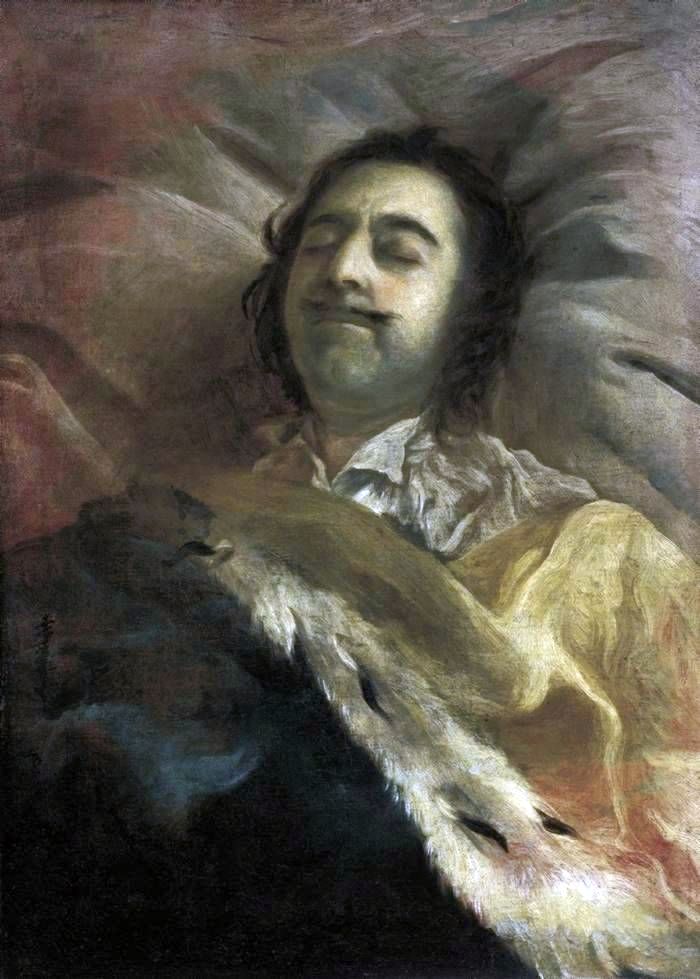
Nikitin’s picture is perceived as a requiem for the “father of the fatherland.” Immediately after the death of Peter, Nikitin was invited to capture the dead emperor. The portrait of the king is depicted, dressed in a white shirt, covered over his chest with a yellowish drape and a blue ermine mantle.
The image of Peter I is full of stately solemnity. The portrait is filled with the mood of deep sincere grief: for Nikitin Peter was not only an emperor, but a close and well-known person whose death was a personal loss for the artist. The master traces every wrinkle, every fold, every strand of hair, as if feeling its responsibility to future generations. Death has already distorted the face of Peter, but looking at the image of the dead emperor, one can understand his greatness in his lifetime.
The portrait was transferred in 1762 by order of Empress Catherine II from the old wooden Winter Palace on Nevsky Prospect near the Police Bridge to the Imperial Academy of Arts. Its author was called I. N. Nikitina, I.-G. Tannauer, Andrei Matveyev. Modern researchers consider the picture to be the unconditional work of I. N. Nikitin, which is confirmed by its technological analysis.
 Portrait of Peter I by Ivan Nikitin
Portrait of Peter I by Ivan Nikitin Portrait of Anna Petrovna, daughter of Peter 1 by Ivan Nikitin
Portrait of Anna Petrovna, daughter of Peter 1 by Ivan Nikitin Pierre I sur le lit de mort – Ivan Nikitin
Pierre I sur le lit de mort – Ivan Nikitin Portrait of Princess Praskovya Ioannovna by Ivan Nikitin
Portrait of Princess Praskovya Ioannovna by Ivan Nikitin Portrait of a floor hetman by Ivan Nikitin
Portrait of a floor hetman by Ivan Nikitin Portrait of Chancellor GI Golovkin by Ivan Nikitin
Portrait of Chancellor GI Golovkin by Ivan Nikitin Portrait of Tsarevna Natalia Alekseevny by Ivan Nikitin
Portrait of Tsarevna Natalia Alekseevny by Ivan Nikitin Portrait of Empress Catherine I by Ivan Nikitin
Portrait of Empress Catherine I by Ivan Nikitin